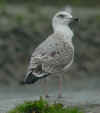 Yellow-legged
Gull - Larus michahellis
Yellow-legged
Gull - Larus michahellis
(last update: October 08 2013)
Coordinators:
Delfín González
Gabriel Martín
Antonio Gutierrez
Amir Ben Dov
Mars Muusse
Larus michahellis - 2CY August
This website deals with the Yellow-legged Gull taxon michahellis, which is a common migrant from July to December in NW Europe. After extensive expansion of the breeding population during the last three decades, it nowadays can be found breeding in Belgium, the Netherlands and Britain in mixed couples with both Herring Gull (argenteus) and Lesser Black-backed Gull (graellsii). There are subtle differences between the populations from the Mediterranean, Atlantic coast of Portugal and Morocco and from the islands in the Atlantic. Most pronounced differences can be found in the taxon atlantis, now regarded as full species by some authors and birds along the Atlantic coast of the Iberian peninsular: lusitanius. Both atlantis and lusitanius are treated in their own sections on this website.
General description
By August, the primary moult is in its last stage, with all juvenile primaries dropped and new second generation primaries up to P8. Most birds have the greater, median and lower lesser coverts moulted in the complete moult last months, with moult still going on in the (outer) lesser coverts. In the mean time, the partial autumn moult starts this month, with 2CY michahellis dropping again some of the outer median coverts and the upper tertials. The final extend of this partial autumn moult in 2CY birds can be seen in the October section.
Moult stage and pace of remiges and rectrices
We have limited surveys on primary moult stage of 2CY michahellis from the end of the month. The figures can be viewed in the table below. We described 82 2CY birds in detail on two occasions at Etaples, Calais region.
By the end of July, the average primary
moult score is P6 fully grown by 28th July. The most
advanced birds by late July show an obvious short wing, with P10 dropped
and P7 already fully grown. One bird has P8 fully grown. The low SD values
(standard deviation) in the July
tables imply a small range of variation.
By the end of August, 2CY michahellis show an average increase of one primary in NW France: the average PMS is
7.9 (n = 29) on August 22 and the average PMS is 8.1 (n = 53) on August
25.
Compared to argenteus, these michahellis figures show that the differences in average PMS are very limited and the individual variation result in large overlap.
The majority of 2CY michahellis have started the moult in the rectrices and the secondaries by July. By the end of August, moult in the secondaries is almost finished, with a gap in the inner half of the secondary row. At first, the secondaries are moulted in descending order, from the outermost secondaries inwards, towards the body. When these outermost secondaries are fully grown, another moult wave starts from the tertials outwards, in ascending order. The stage of secondary moult is nicely illustrated by image 15 to 18. The tail-feathers are moulted centrifugally. As can be seen in the same images, all the rectrices have been replaced and in some individuals, the outermost rectrices R6 are still growing by the last week of August.
Moult stage and pace of wing-coverts
The complete moult in the wing-coverts may start by late April, with the majority of 2CY michahellis moulting median wing-coverts by early May. During the summer months, the median and lower lesser coverts are replaced, the tertials are replaced from the upper tertials downwards, new greater coverts grow in in two waves: from the outermost feathers inwards and from the inner greater coverts outwards. The two waves meet at about coverts #7 and #8. The lesser coverts are replaced last, finishing with the feathers in the carpal edge and the upper rows of lesser coverts. It's late August then and the complete moult in the wing-coverts and tertials is at its end.
In the mean time, 2CY michahellis start moulting inner median coverts and the upper tertials for another cycle: the partial moult in autumn is initiated. This partial moult may overlap with the replacement of the last lesser coverts, by late August. As can be expected, birds include the most vulnerable and oldest wing-coverts first in this partial moult, so this partial moult normally starts with the outermost and inner median coverts, the inner greater coverts and the upper tertials. This is nicely demonstrated by several images in this August section: image 1 shows a bird with missing outer medians, image 11 shows a bird with missing upper tertials and outer medians and image 13 shows a bird with fresh inner greater coverts. These are all illustrative for individuals in which complete moult overlaps with partial moult. The complete moult will be finish by the time the last outer primary P10 is fully grown. See Gull Topography for explanations of feather tracts.
The box below enlarges upon the partial moult in autumn in 2CY michahellis.
Moult stage and pace of scapulars
Moult to third generation
scapulars may start as early as mid-January in 2CY michahellis. By
June, all present birds show active moult in the scapulars, with largest
numbers for the class 75%-99% third generation scapulars (n = 24). By the
end of July, this moult in the scapulars is completed, with fresh feathers
in the lowest scapular row.
Most individuals do not show obvious moult gaps in the scapulars and
mantle by August. The last replaced scapulars still show warm buff or pale
grey centres and obvious white fringes. We do not have sufficient data to
draw conclusions on the exact moulkt stage of the scapulars and mantle.
By July and August, the variation in scapular patterns is tremendous, with some birds already showing an (almost)
complete grey saddle: the grey scapulars and mantle contrast with the
barred lesser coverts. Other individuals show strongly barred scapulars, resulting in a much more immature
appearance.
Tables
| Primary moult score of 2CY michahellis Yellow-legged Gull, at Etaples, NW France (50.43N, 01.37E) on August 08 2003. | ||||
| . | P6 fg | P7 fg | P8 fg | n: |
| P9-P10 | - | - | - | - |
| P10 old | 1 | 2 | - | 3 |
| no old P | - | 28 | 6 | 34 |
| n: | 1 | 30 | 6 | 37 |
| n
= 37; m new P = 7.1; SD new P = 0.42; m old P = 0.1; SD old P =
0.28. P9-P10 = P9-P10 are still old and present. fg = fully grown. In our field surveys, a primary is 'fully grown' when it exceeds the previous feather in the folded wing. Actually, such 'fully grown' feathers may have to grow a little, but under field circumstances, it's very difficult to find out if the waxy sheath, which is the standard measurement for fully grown primaries, is still present. |
||||
| Primary moult score of 2CY michahellis Yellow-legged Gull, at Etaples, NW France (50.43N, 01.37E) on August 10 2003. | ||||
| . | P6 fg | P7 fg | P8 fg | n: |
| P9-P10 | - | - | - | - |
| P10 old | 4 | 8 | - | 12 |
| no old P | - | 27 | 19 | 46 |
| n: | 4 | 35 | 19 | 58 |
| n
= 58; m new P = 7.3; SD new P = 0.58; m old P = 0.2; SD old P =
0.41. Further comments / notes: see previous table. |
||||
| most recent fully grown primary in 2CY Larus michahellis, Etaples, NW France. | ||
| August 22 2000 | August 25 2000 | |
| p6 | - | - |
| p7 | 5 | - |
| p8 | 22 | 49 |
| p9 | 2 | 4 |
| p10 | - | - |
| n: | 29 | 53 |
| m: | 7,9 | 8,1 |
| fully grown: In the year 2000 field surveys, a primary is scored 'fully grown' when it reaches the estimated fully length, which is very subjective in the field. In later researches, we redefined 'fully grown' to primaries, which exceed the previous feather in the folded wing. Actually, such 'fully grown' feathers may have to grow a little, but under field circumstances, it's very difficult to find out if the waxy sheath, which is the standard measurement for fully grown primaries, is still present. | ||
| most recent fully grown primary in 2CY Larus argentatus s.l. (but presumably argenteus), on August 23 & 26 at Boulogne-sur-Mer, NW France and on August 28 at Scheveningen, the Netherlands. | |||
| August 23 2000 | August 26 2000 | August 28 2000 | |
| p6 | 6 | - | 3 |
| p7 | 18 | 16 | 34 |
| p8 | 40 | 27 | 20 |
| p9 | 7 | 1 | - |
| p10 | - | - | - |
| n: | 71 | 44 | 57 |
| m: | 7,7 | 7,7 | 7,3 |
| SD: | 0,77 | 0,53 | 0,57 |
Notes: see previous table. |
|||
 Yellow-legged
Gull michahellis 2CY HES
884278 August 25 2000, Boulogne/Mer, France. Ringed in Switzerland.
Yellow-legged
Gull michahellis 2CY HES
884278 August 25 2000, Boulogne/Mer, France. Ringed in Switzerland. Yellow-legged
Gull michahellis 2CY GO.41 August 2010, Malaga, Spain. Picture: Gabi Martin.
Yellow-legged
Gull michahellis 2CY GO.41 August 2010, Malaga, Spain. Picture: Gabi Martin.Ringed in Malaga.
 Yellow-legged Gull michahellis 2CY G.86F August 24 2010, Malaga, Spain. Picture: Hans Larsson.
Yellow-legged Gull michahellis 2CY G.86F August 24 2010, Malaga, Spain. Picture: Hans Larsson. Yellow-legged
Gull michahellis 2CY PDYZ August 14 2009, Tarragona, Catalonia, Spain. Picture: Chris Gibbins.
Yellow-legged
Gull michahellis 2CY PDYZ August 14 2009, Tarragona, Catalonia, Spain. Picture: Chris Gibbins.  Yellow-legged
Gull michahellis 2CY 171Z August 08-11 2003, Etaples, France. Ringed in S France.
Yellow-legged
Gull michahellis 2CY 171Z August 08-11 2003, Etaples, France. Ringed in S France. Yellow-legged Gull michahellis 2CY S4E6 August 04 2009, Szeged, Hungary. Picture: Csaba Barkóczi.
Yellow-legged Gull michahellis 2CY S4E6 August 04 2009, Szeged, Hungary. Picture: Csaba Barkóczi. Yellow-legged Gull michahellis 2CY SL51 August 09 2006, Leipzig, Germany. Picture: Jürgen Streudtner.
Yellow-legged Gull michahellis 2CY SL51 August 09 2006, Leipzig, Germany. Picture: Jürgen Streudtner. Yellow-legged
Gull michahellis 2CY, August 10 2003, Etaples, France. P8 fully grown and no old primaries left.
Yellow-legged
Gull michahellis 2CY, August 10 2003, Etaples, France. P8 fully grown and no old primaries left. Yellow-legged
Gull michahellis 2CY, August 08 2003, Boulogne/Mer, France. P7 fully grown, no old primaries left.
Yellow-legged
Gull michahellis 2CY, August 08 2003, Boulogne/Mer, France. P7 fully grown, no old primaries left. Yellow-legged
Gull michahellis 2CY,
August 10 2003, Etaples, France. P8 fully grown.
Yellow-legged
Gull michahellis 2CY,
August 10 2003, Etaples, France. P8 fully grown. Yellow-legged
Gull michahellis 2CY, August 10 2003, Etaples, France.Barred individual (second generation-like
wing-coverts and scapulars.
Yellow-legged
Gull michahellis 2CY, August 10 2003, Etaples, France.Barred individual (second generation-like
wing-coverts and scapulars. Yellow-legged
Gull michahellis 2CY,
August 08-11 2003, Etaples, France. Two birds: one grey and one barred scapulars.
Yellow-legged
Gull michahellis 2CY,
August 08-11 2003, Etaples, France. Two birds: one grey and one barred scapulars. Yellow-legged
Gull michahellis 2CY, August 10 2003, Etaples, France. P8 fully grown and secondaries
still missing.
Yellow-legged
Gull michahellis 2CY, August 10 2003, Etaples, France. P8 fully grown and secondaries
still missing. Yellow-legged
Gull michahellis 2CY,
August 10 2003, Etaples, France.P7 fully grown and innermost secondary still
juvenile.
Yellow-legged
Gull michahellis 2CY,
August 10 2003, Etaples, France.P7 fully grown and innermost secondary still
juvenile. Yellow-legged
Gull michahellis 2CY, August 09 2003, Etaples, France. P7 fully grown and innermost secondaries still
juvenile.
Yellow-legged
Gull michahellis 2CY, August 09 2003, Etaples, France. P7 fully grown and innermost secondaries still
juvenile. Yellow-legged Gull michahellis 2CY, August 23 2010, Malaga, Spain. Picture: Hans Larsson.
Yellow-legged Gull michahellis 2CY, August 23 2010, Malaga, Spain. Picture: Hans Larsson.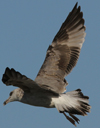 Yellow-legged Gull michahellis 2CY, August 23 2010, Malaga, Spain. Picture: Hans Larsson.
Yellow-legged Gull michahellis 2CY, August 23 2010, Malaga, Spain. Picture: Hans Larsson.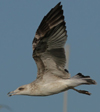 Yellow-legged Gull michahellis 2CY, August 23 2010, Malaga, Spain. Picture: Hans Larsson.
Yellow-legged Gull michahellis 2CY, August 23 2010, Malaga, Spain. Picture: Hans Larsson. Yellow-legged
Gull michahellis 2CY,
August 09 2003, Etaples, France.
Yellow-legged
Gull michahellis 2CY,
August 09 2003, Etaples, France. Yellow-legged Gull michahellis 2CY, August 07 2006, Chevroux, Switzerland. Picture: Stephane Aubry.
Yellow-legged Gull michahellis 2CY, August 07 2006, Chevroux, Switzerland. Picture: Stephane Aubry.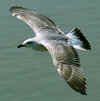 Yellow-legged
Gull michahellis 2CY, August 25 2000, Etaples, France.
Yellow-legged
Gull michahellis 2CY, August 25 2000, Etaples, France.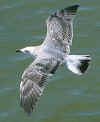 Yellow-legged
Gull michahellis 2CY, August 25 2000, Etaples, France.
Yellow-legged
Gull michahellis 2CY, August 25 2000, Etaples, France.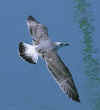 Yellow-legged
Gull michahellis 2CY, August 25 2000, Etaples, France.
Yellow-legged
Gull michahellis 2CY, August 25 2000, Etaples, France.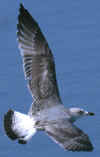 Yellow-legged
Gull michahellis 2CY, August 25 2000, Etaples, France.
Yellow-legged
Gull michahellis 2CY, August 25 2000, Etaples, France. Herring Gull argenteus 2CY, August 25 2000, Boulogne/Mer, France. Have
a look at the 2CY Herring Gull section.
Herring Gull argenteus 2CY, August 25 2000, Boulogne/Mer, France. Have
a look at the 2CY Herring Gull section.